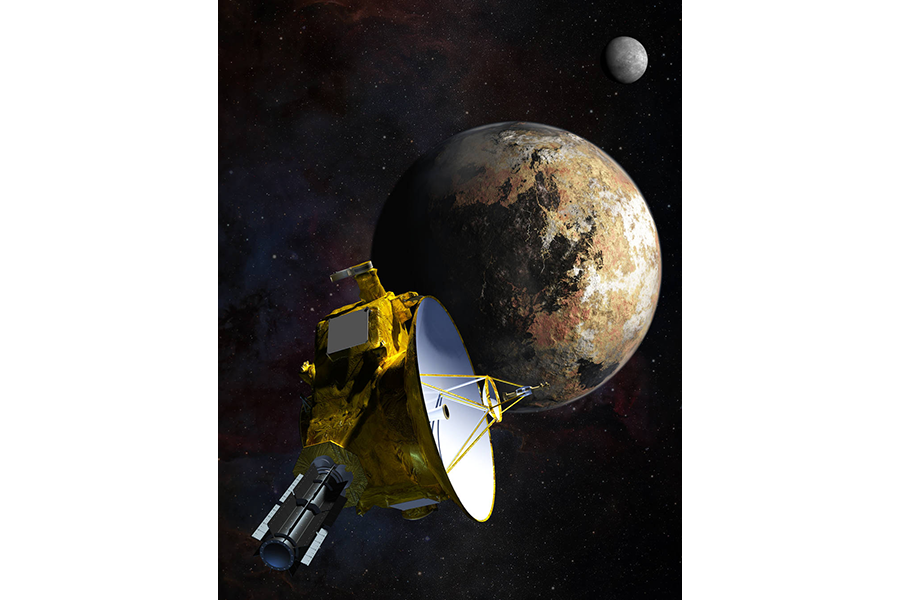New Horizons back on course for Pluto following weekend mishap
Loading...
While most Americans were enjoying Fourth of July celebrations, a team of NASA engineers was focused on a small spacecraft 3 billion miles from Earth.
The agency’s New Horizons spacecraft is just days away from completing a nine-year journey to the outer edge of our solar system, where it will fly past former planet Pluto and get the closest look at the dwarf planet in human history.
The flyby “will give humanity its first up-close look at Pluto and its moons,” wrote The Christian Science Monitor’s Pete Spotts in April.
But first, just days before the scheduled fly-by, engineers had to fix an “anomaly” detected on the spacecraft.
NASA reported on Independence Day that New Horizons had “experienced an anomaly,” that led to a loss of communication with Earth. Communication was soon reestablished – finding the spacecraft healthy – and the agency set up a New Horizons Anomaly Review Board that afternoon to gather information on the problem and initiate a recovery plan.
Yesterday, NASA announced that the spacecraft will soon return to normal science operations.
Investigators – working under the strains of extreme distance that meant two-way communication between the spacecraft and its operators took nine hours – concluded that the incident occurred during an operation to prepare for the fly-by, and that it was caused by a hard-to-detect timing flaw in the spacecraft command sequence. They found that no hardware or software fault had occurred. No similar operations are planned for the remainder of the Pluto encounter, which will see the spacecraft fly just over 6,000 miles past the dwarf planet.
Science observations lost during the anomaly recovery do not affect primary mission objectives, the investigators found, and they had a minimal effect on lesser objectives.
“In terms of science, it won’t change an A-plus even into an A,” said New Horizons Principal Investigator Alan Stern of the Southwest Research Institute in Boulder, Colo., in a statement.
Jim Green, NASA’s director of Planetary Science, added in a statement that he was pleased with the speed of the mission team’s response.
“Now – with Pluto in our sights – we’re on the verge of returning to normal operations and going for the gold,” he added.
New Horizons, a half-ton spacecraft the size of a baby grand piano, is part of a $700-million NASA mission to study Pluto. The mission has already yielded some exciting discoveries.
Two weeks before its rendezvous with the planet, the spacecraft detected frozen methane on the planet’s surface.
Originally planned science operations are expected to resume tomorrow, according to NASA, and the spacecraft is still scheduled to pass Pluto on July 14.






